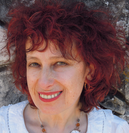|
A bit over a month ago when I set out to write about some of the most important elements of writing (focusing on picture books because of our upcoming picture books course) this week's turn was about pacing. Well it turns out that Miranda Paul wrote a wonderful post on one of our other blogs with great examples right here and rather than reinvent the wheel I figured that I'd just build upon what Miranda wrote a little. I encourage you to read this first and then head on over to Miranda's post. So what is pacing? Pacing is how you get your story from the beginning to the end. It's how you set up a foundational structure from when you introduce your problem or important topic, to why it's important, to the obstacles the hero/protagonist must overcome to solve the problem, to finally solving the problem, to the great consequences of this and then the ending followed by perhaps a twist on the final page. It's the rhythm you use to create your story. There are structures that you can use like geographical structures moving from East to West, North to South, from one neighborhood to another, from one country to another, from one room in the house to another, or traveling out to space and then back again. If you are bringing it back again or referencing where you started at the beginning, this is an elegant way of creating a circular structure. There are also chronological structures that happen from waking in the morning to going to sleep at night, from the days of the week, to the months of the year, to aging over years. There are also lists where you count down or count up to create another delightful foundational structure to help pace your story. Counting backwards is great for bedtime stories as it can be a de-accelerant, slowing down the pacing for kids winding down for sleep. Counting upwards tends to be more exciting with bigger numbers as you go but it can really work either way. Pacing is also how you set the speed for the story by either speeding it up or slowing it down with language choices - shorter words will make it go faster, longer word will slow it down. And let's not forget how you use sentence structure - longer or shorter sentences will do the same thing as your word lenghts. Repetition will also slow it down and engage kids in joining in the fun repeating the words or phrase. Page turns are another great part of pacing, where you end or break your sentences (with ellipses... ). White space or negative space is another important element of pacing. Having pages with minimal or no words is a powerful pacing tool. Try breaking up your manuscript to include page turns. Have a look at where you can create some white space or negative space by having few to no words on a page. And while it's often the illustrator who decides where the page breaks happen, you can influence this by how you create your paragraphs. Pacing your story can be tons of fun.
Please leave a comment below and share if you found this helpful and don't forget to check out Miranda's post on the same topic.
7/25/2015 02:11:05 am
This reminds me of an episode I saw of "The New Worst Witch" (inspired by the books Jill Murphy). In it, the headwitch explained that time doesn't always go in a straight line. When you're having fun it flies by, while it seems to go forever when you are bored or impatient. Comments are closed.
|
We are so excited to be mixing things up at CBA, beginning with some delicious additions to the Blogfish. Meet our awesome bloggers!!
Here's our lineup: 1st Mondays begin with former school psychologist Dr. Debra Collins who will be writing about Social emotional Learning in kidlit and behind the scenes as well as Jewish children's books. 2nd Mondays will feature super smart Melissa Stoller whose career is taking off with several new books. 3rd Mondays will feature our new blogger coming soon. 4th Mondays features new blogger, the fabulous Brentom Jackson, who has a beautiful approach to blogging. And 5th Mondays we'll be taking a break Archives
July 2024
|
|
Discover
|
About Us
|
Join Us
Join our Community and receive a fabulous free gift, KidLit tips, newsletters, scholarship info, contests, and more!
Join our KidLit Mentorship |
Social Media
Interact with our FaceBook Group or follow us on:
|
© 2010-2024 All content on this website is copyrighted. Sorry, all courses are non-refundable.

 RSS Feed
RSS Feed
